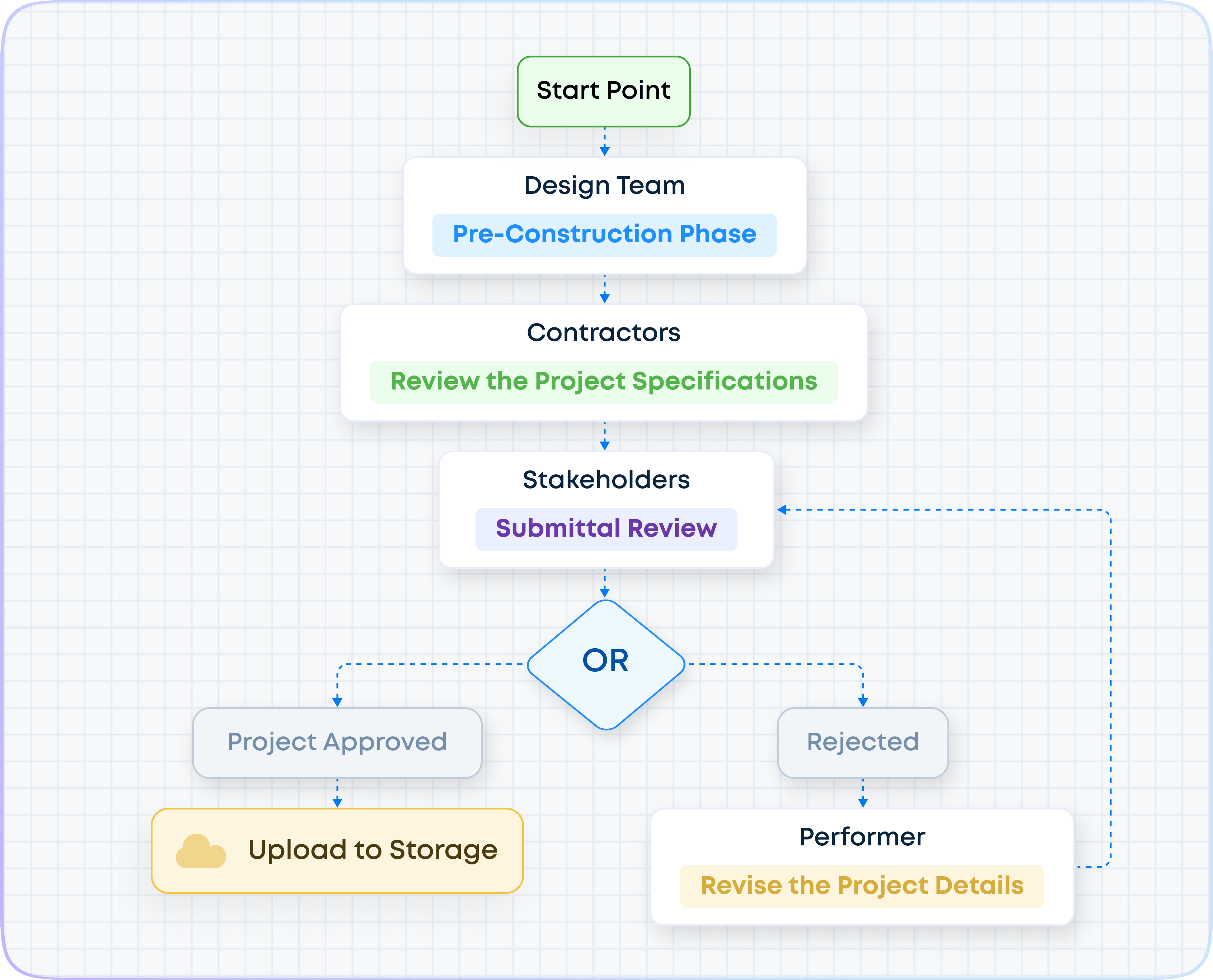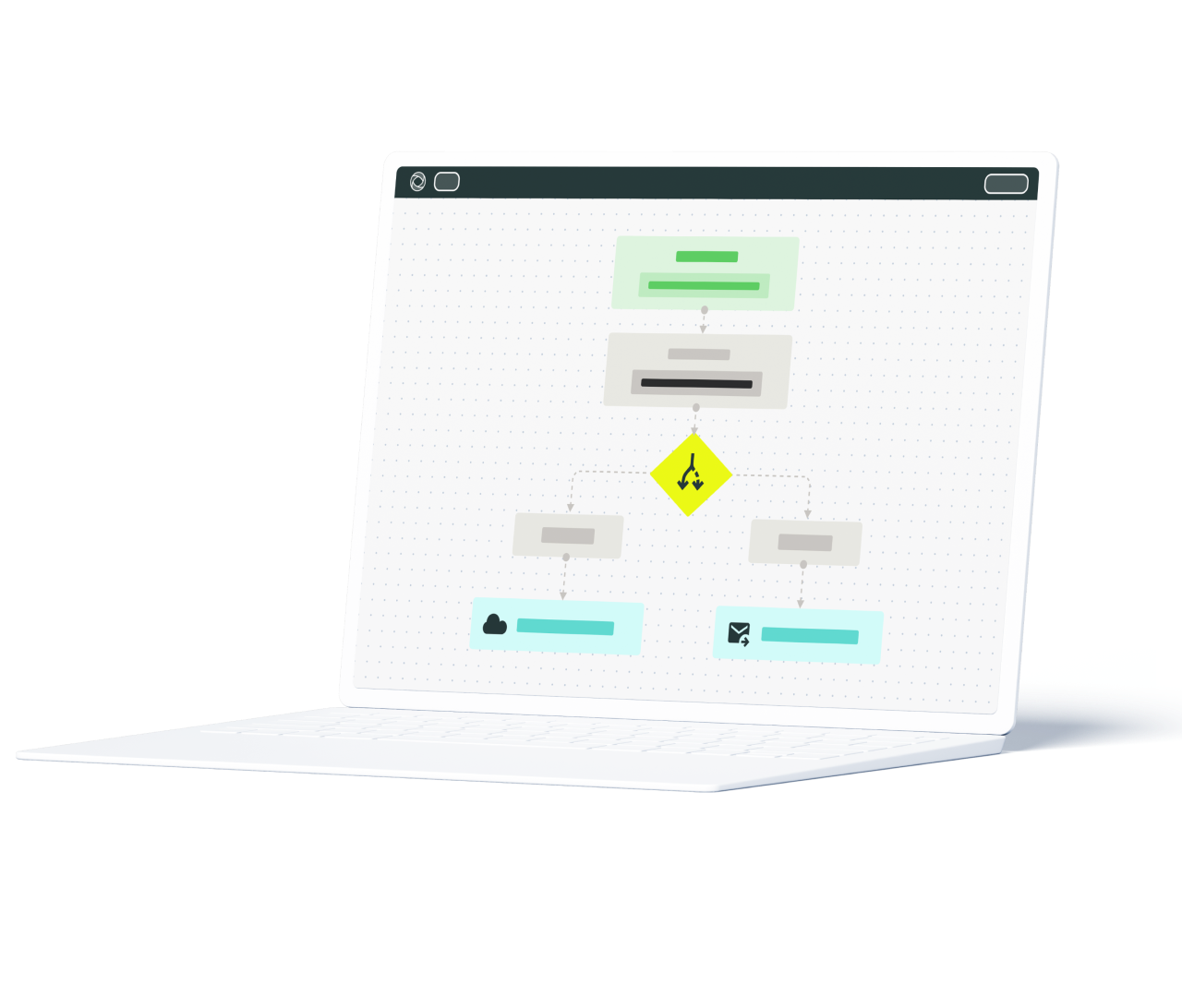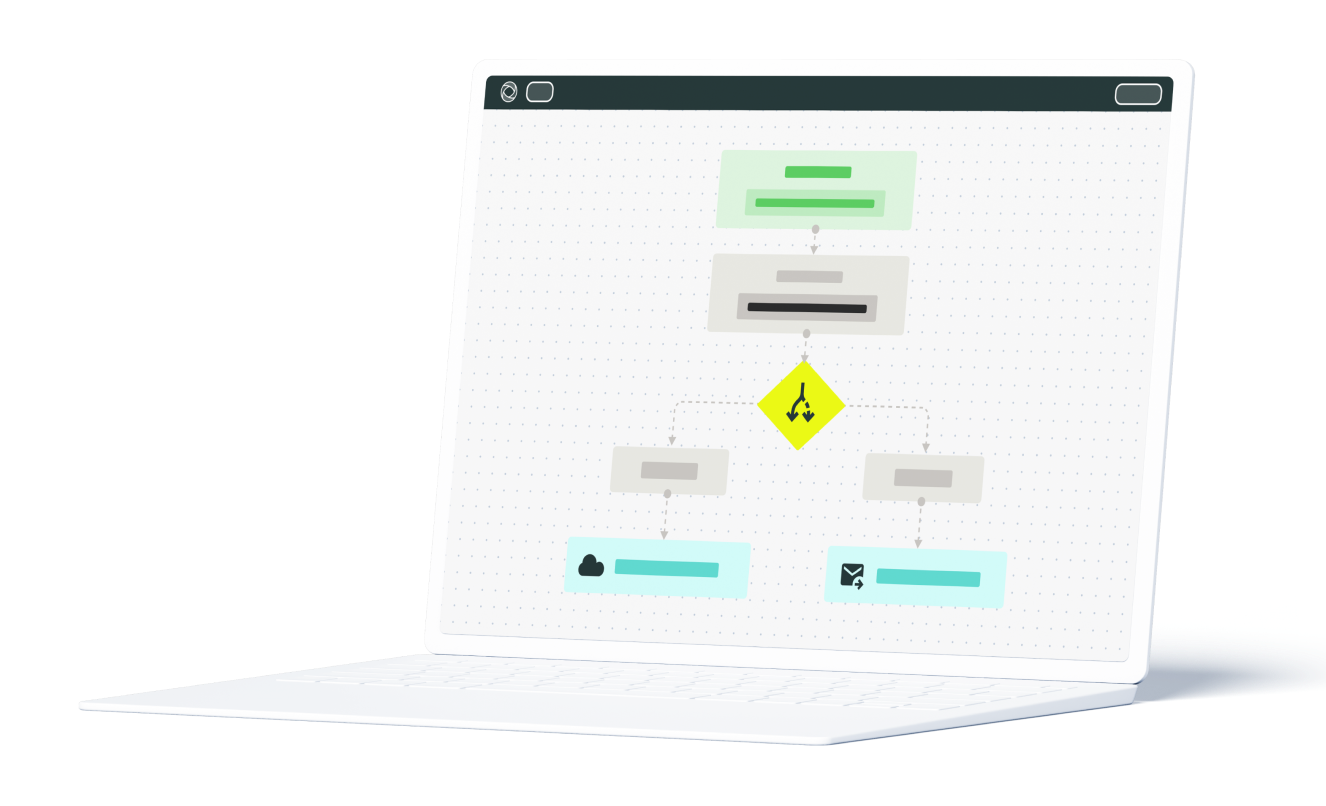What Is the Construction Submittal Process?
The submittal process in construction involves contractors and subcontractors sharing project-specific details (like shop drawings and material samples) with the design team. This team, made up of architects and engineers, then carefully reviews each item.
The goal is to make sure building materials and methods meet the project specs, comply with codes, and match the design intent. Catching issues at this pre-construction stage helps avoid costly delays and do-overs.
With most large projects running 20% behind schedule and 80% over budget, the value of the submittal process can’t be overstated.
Why Do You Need to Set Up a Construction Submittal Process?
A well-thought-out submittal process sets your construction project up for success. Here’s how it helps:
- Quality Assurance: It gives the design team the opportunity to check that materials and methods are right for the project before construction begins. Finding and fixing issues early will save you money and prevent construction delays.
- Streamlined Workflow: A good process creates a clear system for managing submittal approvals and decisions. This helps prevent bottlenecks, avoids unnecessary back-and-forth, and keeps the project on schedule.
- Regulatory Compliance: The process ensures that everything, from materials to construction methods, follows the required codes and standards. This helps maintain site safety and avoid legal problems down the line.
- Dispute Resolution: Approved submittals provide a clear paper trail. If disputes come up later, you’ll have everything documented, which will make it easier to sort things out quickly.
- Clear Communication: It creates an open channel between contractors and the design team. Questions get answered quickly, and issues get sorted out before construction starts, so everyone stays on the same page and there are no surprises later.
- Documentation for Future Reference: The detailed records from the submittal process can be a huge help down the road. Whether you’re maintaining the building, planning upgrades, or dealing with questions later, you’ll have everything documented and ready to reference.
Simplify Your Construction Submittal Process with Fluix: Start Automating Today
Construction Submittal Process Steps
Breaking down the submittal process into clear, actionable steps makes it manageable for everyone. This guide outlines the key steps, so you know what to do and when.
Step 1: Preparation
The design team puts together a detailed submittal checklist in the pre-construction phase. This document should spell out everything contractors and subcontractors need to provide—like materials, methods, and timelines.
This checklist is informed by the project owner’s design preferences, as well as building codes and guidelines. This step sets expectations early, giving contractors a clear path to plan their schedule and resources.
Step 2: Pre-Submittal Meeting (Optional)
Not every project requires a pre-submittal meeting, but it can save time and stress later.
These meetings allow contractors and subcontractors to discuss potential issues like changing site conditions, supply chain challenges, and market conditions. It’s also a chance to propose alternate materials, ask questions, and ensure the entire team is aligned before moving forward.
Step 3: Submittal by Contractor
At this stage, the responsibility shifts to the contractor. They should pull together a submittal package based on the checklist and any pre-submittal discussions. This package typically includes:
- Shop drawings for specific parts of the build.
- Product data sheets for chosen materials.
- Physical samples for finishes and fixtures.
The contractor should make sure their package is complete, accurate, and aligned with the project specs. Once everything is double-checked, it’s submitted for review.
Step 4: Submittal Review Process
This step is all about reviewing the proposed materials, products, and construction methods to ensure compliance with the contract documents, the project’s overall design, building codes, etc. Usually, the design team takes the lead here.
Depending on how complex the submittal is, reviewers might loop in specialists like structural engineers, geotechnical consultants, or materials testing experts. In some cases, a project oversight team representing the owner or stakeholders might also come in to review.
There’s usually some back-and-forth communication between the contractor and the reviewers to clear up any questions they have about any submittals in the package.
Step 5: Submittal Response
The design team or oversight group should give the contractor formal feedback after completing a detailed review. This feedback, or response, typically falls into one of four categories:
- Approval: The submittals check all the boxes and get the green light.
- Approval as Noted: It’s approved, but there are some notes or details for the contractor to consider before procurement.
- Approval with Revisions: Conditional approval is granted, but the contractor needs to make specific changes before final acceptance. The reviewers clearly outline what needs to be fixed by the contractor.
- Rejection: If the submittal package doesn’t meet requirements, it’s rejected. The design team provides detailed feedback on what went wrong, and the contractor must revise and resubmit the package.
Step 6. Resubmission (If Needed)
If the submittal package is rejected or needs revisions, the contractor takes the feedback and makes the necessary changes. Once the issues are addressed, the updated package is resubmitted. This process might take a few rounds, but it continues until the submittals get final approval.
Step 7: Approval and Distribution
After the submittal package is approved, it’s time to share it with everyone who needs it. This includes the general contractor, subcontractors who will be using the approved materials or methods, and any project stakeholders who need it for reference during the construction phase.
To cover aspects of the submittal process, we recommend using these checklists:
Construction Submittal Process Flowchart Example
This submittal process flowchart maps out important steps in a way that’s easy to follow.
- The contractor identifies which submittals are needed based on project requirements.
- The contractor collects and organizes all necessary submittal documents and materials.
- The contractor reviews the submittal package to ensure it’s accurate and complete.
- The contractor sends the package for review.
- The design team checks the submittals to ensure they match project specs, codes, and regulations.
- The design team notes any issues, missing information, or changes needed and provides feedback to the contractor.
- The contractor updates the submittals based on the feedback and resubmits them.
- The design team reviews the updated submittals and approves them once they meet all requirements.
- The relevant teams receive the approved submittals for procurement and implementation.
- All submittals are saved as part of the project records.


How to Optimize the Construction Submittal Process
When delays happen, they often start with the submittal process. Here are 5 strategies to help fine-tune your process so you can avoid submittal setbacks.
- Standardize Documentation. Reviewing submittals can be a challenge when they arrive in a mix of formats. A lack of consistency can make it tough to stay organized and make sure every detail is accounted for. That’s why you should consider creating clear templates for your most commonly used submittals. This way, contractors know exactly what to include, and reviewers can easily follow the information without wasting time.
- Use Digital Tools. Handling paper submittals is time-consuming and you run the risk of losing important documents. Software for construction management can store all your submittals in one place, so your teams can easily access, update, and track them in real time.
- Set Clear Processes. When roles and deadlines are unclear, it’s easy for submittals to fall through the cracks. Create a step-by-step workflow that shows who reviews, approves, and follows up on submittals. Make sure everyone understands their responsibilities by discussing this workflow in pre-construction meetings.
- Monitor Progress. Without proper tracking, submittal delays can catch you off guard. Use dashboards or tracking systems to keep tabs on the status of submittal packages. Set up alerts for pending or overdue items to make sure you don’t miss anything.
- Review and Improve. No process is perfect. Regularly review your construction submittal process for inefficiencies and ask for feedback from your team. Small adjustments, like refining workflows or adding tools, could make a big difference for future projects.
Managing the Submittal Process with Fluix
The submittal process in construction is critical but, all too often, chaotic. Fluix changes that. It’s powerful field productivity software that streamlines workflows, improves team collaboration, and ensures nothing falls through the cracks.
Here’s how Fluix can help you with submittals:
- Centralized Storage: Keep all project information in one secure place. Upload, organize, and find submittals quickly.
- Smart Routing: Automatically send submittals to the right person at the right time. No missed steps or confusion—it’s all built in.
- Real-Time Collaboration: Review, comment, and approve submittals instantly. Answer questions and make changes without an endless chain of emails or calls.
- Access Anywhere: Stay connected, whether you’re on-site or at your desk. Access submittals from any device to keep your project moving in the right direction.
- Clear Audit Trails: Track every action to meet compliance standards and show everything was done right.
- Seamless Integration: Connect with tools you already use, like cloud storage or business intelligence systems, for smoother workflows.

